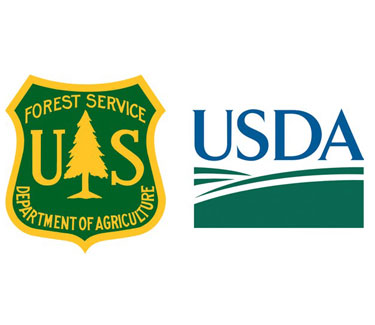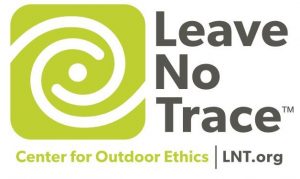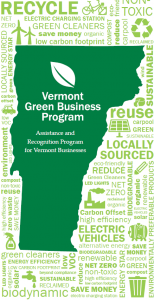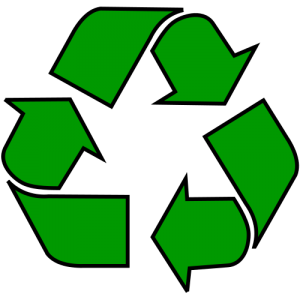RESPONSIBLE BUSINESS
Home / Responsible Business
RESPONSIBLE TOURISM IN THE ADVENTURE INDUSTRY
“Take Nothing But Pictures, Leave Nothing But Well Placed Footprints”
Appalachian Trail Adventures supplies a real Vermont vacation, allowing you to encounter the culture of the places we visit. It also allows guests to interact with people from different states and countries, learning about their living experiences. This institution is an equal opportunity provider and operated under a special use permit with the Green Mountain National Forest and the USDA.
Traveling and being responsible also means leaving a minimal impact on the places we visit. This includes the environment as well as local culture. We do our best to promote responsible tourism by treating people we meet with the utmost respect, and leaving our hiking trails, lakes and rivers cleaner than we found them.
Being a sole proprietor business, we pride ourselves on developing relationships with the locals, most notably local businesses. Our accommodations and breakfast are supplied by the North Star Inn; lunch is provided by the Killington Delicatessen; and dinner is served at the Foundry Restaurant and the Inn at Long Trail. Even when guests go horseback riding or rock climbing, we do everything we can to work with small local businesses. While shopping, we look for local farmers’ markets to purchase local produce and retailers that choose to buy locally rather than over the internet.
On our sightseeing tours we travel throughout Vermont, visiting many different villages, cheese makers, artisan shops and attractions, learning the importance of local traditions, cultural histories, museums and historical sites. A museum is an excellent way to support a village’s long-lost history. This experience allows our hikers to understand the early settlers’ hardships.

Vermont Backcountry Ethics
We are excited to report that the Vermont Backcountry Alliance, a program of the CTA, has finalized a new set of Leave No Trace guidelines for backcountry users in Vermont. Close partnerships with the Vermont Department of Forests, Parks and Recreation, Green Mountain Club, Green Mountain National Forest, Winter Wildlands Alliance, and the Leave No Trace Center for Outdoor Ethics, made this publication possible.
The Vermont Backcountry Ethics are a winter adaptation of seven core principles of outdoor travel developed by the Leave No Trace Center for Outdoor Ethics. Signs with the Vermont Backcountry Ethics will be displayed at trailheads, ski areas, and other recreation areas throughout the state. In addition to the signs, a more detailed “long” version of the ethics is available for download.
Vermont is a special place for outdoor recreation activities; the Backcountry Ethic is one way to help keep our backcountry areas in good condition and available for future generations of recreation opportunities. Please keep these Backcountry Ethics in mind while you explore Vermont during the winter!


Atmosfair
Our fleet of minivans will be running carbon neutral. We believe that the only right way is to save resources and find ways to reduce CO2 emissions, and we feel running our vehicles carbon neutral is a start. We will be going with Atmosfair.com, which is a climate protection organization. They actively protect the climate by compensating for greenhouse gases through the use of renewable energies, among other activities. Even our website is 100 percent eco-friendly and powered by wind energy. Atmosfair carbon offset projects reduce CO₂ emissions and support sustainable development by transferring technology and combating poverty Currently, 90 % of atmosfair’s carbon offset projects adhere to the CDM Gold Standard, the strictest standard available for climate protection projects.
In addition, we encourage our vacationers to carbon offset their flights when joining us on a vacation; hikers are encouraged to go directly to Atmosfair.com for more information
Leave No Trace Ethics
While hiking, our guides educate guests about Leave No Trace Ethics (LNT). LNT is built on seven core principles that are used to communicate the best available minimum impact guidance for enjoying the outdoors responsibly. The Seven Principles of LNT were developed to help educate and guide recreationists in sustainable minimum impact practices that mitigate or avoid recreation-related impacts. These Principles are the most robust and widely utilized minimum impact outdoor practices. Although LNT has its roots in backcountry and wilderness, the practices have been adapted so that they can be applied anywhere – from the backcountry, to local parks, to your backyard – and for any recreational activity. Each Principle covers a specific topic and provides detailed information for minimizing impacts.

- Prepare adequately for extreme weather, hazards and emergencies. Carry plenty of drinking water.
- Keep to the trail; shortcuts erode soil and damage vegetation. Walk single file in the middle of the trail, even when wet or muddy, to avoid widening the treadway or mud puddle. Walk on rocks whenever possible, especially in fragile areas such as shorelines and alpine zones.
- If you pack it in, pack it out! That includes biodegradable material like apple cores. We don’t want to attract animals like bears to the trails and we don’t want to see a mountaintop with hundreds of apple cores and orange peels.
- Take only pictures, leave only carefully placed footprints. Flowers and other naturally occurring objects are best enjoyed in their natural states. Removal of these items is illegal on state and federal lands. Let others enjoy nature and cultural artifacts as you originally found them. You should always leave a trail cleaner than you found it.
- Bring binoculars and observe wildlife from a distance. Feeding animals damages their health, alters natural behaviors and exposes them to predators; do not feed animals.
- Respect other trail users and protect the quality of their experience. Be courteous and yield to others on the trail. Take breaks away from the trail and other visitors on durable surfaces. Let nature’s sounds prevail by avoiding loud voices and noises.

Vermont The Green State
Vermont is known as the Green State, with strict recycling and composting laws. We are the first state to make composting food waste mandatory to help reduce trash, lower greenhouse gas emissions, help build Vermont soils – all while promoting a green initiative to our customers!
Vermonters and other states throw away plenty of trash; more than a fourth of household and commercial waste is food waste. This amount is even higher in restaurants and is in fact the largest solid waste contributor to landfills. The food scraps we throw in our landfills produce methane, a gas with 25 times the global warming potential of carbon dioxide. Diverting this material will keep you in compliance with Vermont’s recycling law, Act 148, which bans the disposal of food scraps by 2020.
The Vermont Green Business Program is a no-cost, voluntary, recognition program that provides resources to Vermont business on how to go above and beyond compliance with existing environmental regulations, using pollution prevention strategies and implementation of best management practices.
The first Green Up Day was launched statewide by Governor Deane Davis on April 18, 1970 with 100,000 volunteers. The Interstate Highways closed from 9am to 4pm for litter pick up by volunteers (Amazing the highways were closed!). Robert Babcock a Burlington Free Press reporter had the idea of cleaning up Vermont’s roadsides.
THREE R’S OF THE ENVIRONMENT―REDUCING, REUSING AND RECYCLING
ATA and our partners believe in the three Rs―Reducing, Reusing and Recycling―that help us, our guests, our community, our state and the environment by saving money, energy and natural resources. Every year, Americans throw away 50 billion food and drink cans, 27 billion glass bottles and jars, and 65 million plastic and metal jar and can covers. More than 30% of our waste is packaging materials. Where does it all go? Some 85% of our garbage is sent to a dump, or landfill, where it can take from 100 to 400 years for things like cloth and aluminum to decompose. Glass has been found in perfect condition after 4,000 years in the earth!
We are quickly running out of space. It’s time to learn the three R’s of the environment: reduce, reuse, recycle. Then practice what you preach: don’t buy things you don’t need or items that come in wasteful packaging or that cannot be recycled. Reuse and recycle whatever you can.

- The First ‘R’ – Reduce: The concept of reducing what is produced and what is consumed is essential to the waste hierarchy. The logic behind it is simple to understand – if there is less waste, then there is less to recycle or reuse. The process of reducing begins with an examination of what you are using, and what it is used for. There are three simple steps to assessing the reduction value of an item or process:
- Is there something else that can be used for this purpose? Using multi-use items is essential to beginning reduction. One example would be a coffeepot and a cappuccino maker. Both of them do distinctly different things, but you can buy a coffeepot that has a steaming attachment on it so it can do both. The purchase of the one item means that you don’t use two. It reduces the amount of production, and the amount of waste packaging material that will be generated.
- Is this something that needs to be done? A lot of our waste material comes from items that are considered to be “disposable.” Not in the sense that you use something once and then throw it away, that can actually be a part of environmental responsibility when you are working with medical items – disposable in this sense means whether or not what the item allows you to do has any real meaning or purpose.
- Is the item a part of something that you need to do, or want to do in your life? There is a limit to what you need to be prepared for in life. Chances are you won’t need a car that is equipped to handle a sandstorm in the desert. Buying one encourages production, wastes your resources and creates more generative waste than you can imagine. Always make sure that what you consume, or keep in your life as preparation – matches the reality of potential opportunity in your life.
- Here are some of things you can do to reduce the waste:
- Print on both sides of the paper to reduce paper wastage.
- Use electronic mail to reach out to people instead of sending paper mail.
- Remove your name from the mailing lists that you no longer want to receive.
- Use cloth napkins instead of paper napkins.
- Use silverware and dishes instead of using disposable plates, spoons, glass, cups and napkins. They add to the problem and result in large amount of waste.
- Avoid buying items that are over-packaged with foil, paper, and plastic. This excess packaging goes to waste.
- Buy durable goods that have long warranty. They generally run longer and save landfill space.
- Bring cloth sacks to the store with you instead of taking home new paper or plastic bags. You can use these sacks again and again. You’ll be saving some trees!
- Plastic containers and reusable lunch bags are great ways to take your lunch to school without creating waste.
- Don’t throw out clothes, toys, furniture, and other things that you don’t want anymore. Somebody else can probably use them. You can bring them to a center that collects donations, give them to friends, or even have a yard sale.
- Store food in reusable plastic containers.
- The Second ‘R’ – Reuse: You may have a box of things you keep that are broken or that you don’t have a use for that you hang on to in-case you find another use for them; or you may find bargains on old furniture or go trash picking and get things that you can refinish – in either case you are working towards reusing the item. Learning to reuse items, or re-purpose them for a use different then what they are intended for is essential in waste hierarchy.
- One of the best examples for how this is being done today is the modular construction of homes and office buildings that is being created out of discarded shipping containers. These large, semi-truck sized metal containers represent a huge waste problem. Repurposing them as homes and offices saves them from the landfills and doesn’t require the additional expenditure of nature resources to melt down and reconfigure the metals used to create them.
- You may either reuse those items for your own use or donate so that others can use them. You can reuse below items like:
- Old jars and pots: Old jars and pots can be used to store items in kitchen. They can also be used to store loose items together such as computer wires.
- Old tires: Tires can either be sent to recycling station or can be used to make tire-swing.
- Used wood: Used wood can be used as firewood or can be used woodcrafts.
- Newspaper: Old newspapers can be used to pack items when you’re planning to move to another home or store old items.
- Envelopes: Old and waste envelopes can be used by children to make short notes.
- Waste paper: Waste paper can be used to make notes and sketches and can be send to recycling center when you don’t need them anymore.
- Items that can be donated to others include:
- Old books: Your old books can be used by poor children or can be donated to public libraries.
- Old clothes: Your unwanted clothes can be used by street children or can be donated to charity institutions.
- Old electric equipment: Old electric equipment can be donated to schools or NGO’s so that they can use them.
- Rechargeable batteries: Rechargeable batteries can be used again and again and helps to reduce unnecessary wastage as opposed to regular batteries.
- Apart from this, you can build a compost bin and reuse many waste items like used tea bags. The waste then degrades and turns into compost that help your plants grow and shine.
- The Third ‘R’ – Recycling: The last stage of the waste hierarchy is to recycle. To recycle something means that it will be transformed again into a raw material that can be shaped into a new item. Many of the things we use every day, like paper bags, soda cans, and milk cartons, are made out of materials that can be recycled. There are very few materials on the earth that cannot be recycled. One of the issues facing communities that want to become more involved with a recycling effort is that while the relying collection and sorting process may be affordable to implement, there still has to be a facility to receive and transform the discarded waste into a raw material. More progress is being made toward uniting recycling plants with industries that can process the waste material through agreements and incentive credits.
- In some towns you can leave your recyclables in bins outside your home, and a truck will come and collect them regularly. Other towns have recycling centers where you can drop off the materials you’ve collected. Things like paper and plastic grocery bags, and plastic and aluminum cans and bottles can often be brought to the grocery store for recycling. Whatever your system is, it’s important to remember to rinse out and sort your recyclables!
- One need to learn as to what products can be recycled and what not. By carefully choosing the products that can be recycled, can be a first step towards efficient recycling.
- In addition to recycling the things you buy, you can help the environment by buying products that contain recycled materials. Many brands of paper towels, garbage bags, greeting cards, and toilet paper, to name a few examples, will tell you on their labels if they are made from recycled materials.
- Buy products from market that are made up of recycled materials i.e. the product should be environment friendly.
- Buy products that can be recycled such as glass jars.
- Invent new ways to recycle different items.
- Avoid buying hazardous materials that could pose difficulty for you to recycle. Buy non-toxic products, whenever possible.
- Buy products that have been made from recycled material.
- Use recycled paper for printing or making paper handicrafts
SIGN UP FOR OUR NEWSLETTER
and never miss any special offers or news!
Contact Us
Call or Text: 1-802-347-4343
Mailing: PO Box 394, Killington, VT 05751
Hours: Open 7 days a week from 7:00am-8:45pm



